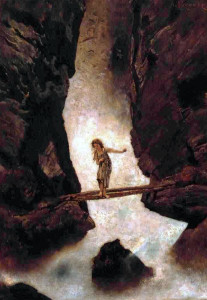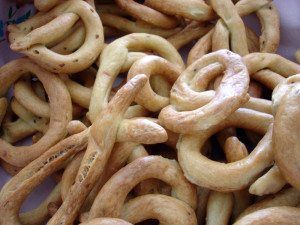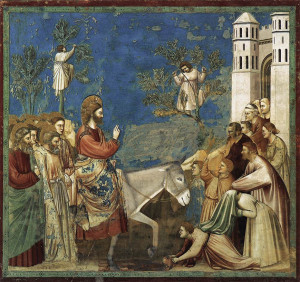By the time you read this, spring will have made its arrival by the almanac: the equinox––vernal here in the Northern Hemisphere, autumnal in the Southern––came and went at 12:30 in the morning (Eastern Daylight Time) this 20th day of March. In traditional reckoning of time we are at spring’s height, its midpoint, and now are on the downhill ride toward summer. But no matter how you reckon your time, what is clear in all cases is this: balance. Day and night now are just about equal in length no matter where we are on the planet, and there is something about that balance that is wonderful (as in full of wonder): no matter what concerns we have in our lives, be they major or minor, the celestial clockwork continues. If a vast planet of oceans and mountains can achieve balance, it gives us hope that we can, too.
It is, as well today, Palm Sunday, setting the events of Holy Week in motion. We enter into the highest days of the Christian calendar. I have said this before in the Convivio Book of Days: Palm Sunday has never been a favorite day of mine. The Mass is really long, the congregation gets to read but it’s almost always lackluster and halfhearted, and I never know if I should feel mourning or celebration. Father Seamus likes to say that attendance goes up whenever they give something away at church, even if it is just a couple of palms, even in this chlorophyll-laden land where we see palm trees every time we open our eyes.
One of the more charming traditions for the day is the fashioning of crosses out of those palms. Some can be very elaborate: my mom’s cousin’s husband could turn a single palm frond into a cross with two flowers bursting out of its center. A lesser known tradition would have us eat figs on Palm Sunday, which comes out of the story of Christ’s cursing of the fig tree, which occurred soon after he arrived in Jerusalem:
In the morning, as he was returning to the city, he became hungry. And seeing a fig tree by the wayside, he went to it and found nothing on it but only leaves. And he said to it, “May no fruit ever come from you again!” And the fig tree withered at once. (Matthew 21: 18-19)
And even this irritates me about Palm Sunday. This story sounds like something Teenager Jesus might have done. Why curse a fig tree for having no fruit? Be that as it may, some people make sure to eat figs on Palm Sunday just because of this verse and a similar one in Mark. They’ll be eating dried figs, for sure, because it’s not fig season. You’d think Jesus would have known that, too.
And with Palm Sunday’s close, we begin to clean. Just as we “made our house fair as we are able” during Advent, these next few days are days of making our house fair as we are able for the coming feast of Easter. By Wednesday night, the moon will be full and all should be done, and all distractions set aside, for the mysteries of Easter begin with Holy Thursday: one of my favorite nights of the year, a night rich with ceremony and ending in pilgrimage and peaceful contemplation, and I am of the mind that my disdain for Palm Sunday is more than made up for by my love for Maundy Thursday. And there it is, perhaps: that balance, manifested, as we stand here on a planet midway now between longest night and longest day.
Image: “The Waterfall” by Anton Romako. Painting, late 19th century. [Public domain] via Wikimedia Commons.


